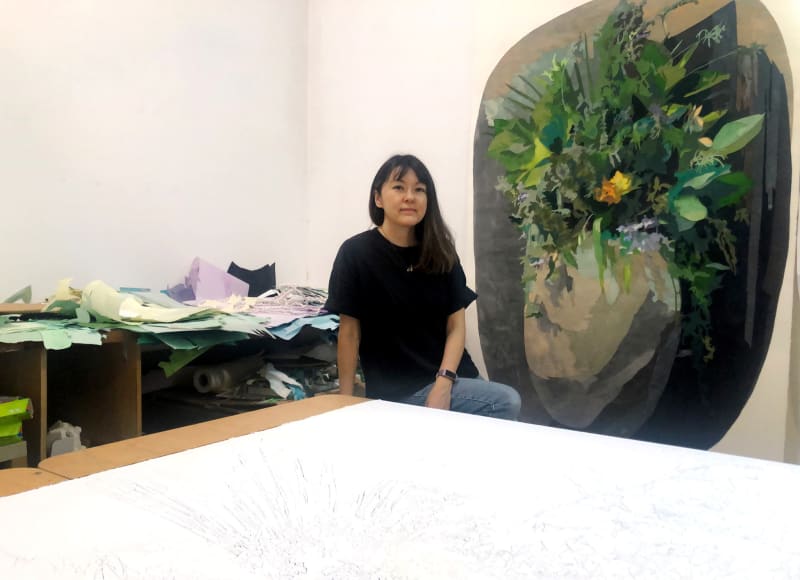In her drawings, murals and paintings, Japanese born, and Brooklyn based artist Naomi Kawanishi Reis, utilizes paper and fabric to make idealized spaces, ranging from utopian architecture of modernism, gardens, and more recently, still life in domestic spaces. In this recent body of work, Reis starts with photographs taken by her mother of her ikebana arrangements displayed outside the family home in Kyoto. Reis downloads the images from the family online chat, the link that has connected her diasporic family across oceans.
You were born in Shiga, Japan and besides making art you have also worked as a copyeditor and translator from Japanese into English. Tell me a bit about yourself and what brought you to make 2D works using everyday materials?
Making work out of everyday materials points back to the elemental human need to make, to touch, to respond to material, using whatever is around. I feel an affinity with craftspeople, people who lived close to the land and lived off the labor of their hands. My mom’s father was a blacksmith in a small farming and fishing village in Kochi prefecture in Japan, and my father’s family were second-generation Swedish-American farmers in Massachusetts. The urge to make, I think, comes from a place older than myself, going back to the lineage of laborer rather than to aristocratic court artists.
My first artworks, if they can be called that, happened naturally out of need. I was in my mid-20s, and had recently left the low-paying salaried job at the New York office of a Japanese printing company that had brought me to the city. I had moved to the U.S. from Kyoto in the mid-1990s to attend a liberal arts college upstate and was still struggling with culture shock. In this isolated time with few friends and no family nearby to lean on, I started drawing, collaging, cutting, gluing as a way to keep my hands busy and my mind from spinning in negative circles. I truly think this activity saved me, put me in a parallel space-time where joy was possible, where invention and creativity brought light and new possibilities.
...
Read the full feature at artspiel.org

